Producers
-
Description:
This family-run estate is situated in Castel di Lama in the Ascoli Piceno region, in southernmost Marche, with vineyard holdings (45 ha) straddling the Abruzzo line. The main vineyard, in Offida, is hilly (280m-350m), with eastern exposure and a loose clay soil. First planted in the 1950s, the winery is managed today by proprietor/winemaker Quinto Fausti and his son Alighiero. Gambero Rosso notes that the Faustis practice “rigorous quality selection of the fruit,” ensuring that their whites and reds are among the finest values in Italy. All wines are fermented with native yeasts and adds a max of 80mg/L of Sulphur. Certified Organic.
Image:
-
Description:
Thank you to importer Louis/Dressner for this profile of De Bartoli:
(Click here for much more on De Bartoli on Louis/Dressners's website or here for De Bartoli's own website)
Marsala production dates back to the 1770's, when the Englishman John Woodhouse accidentally stumbled across the local wine made in a method called il perpetuum, basically a fortified wine. He immediately shipped it back to England, where it was successfully received. In the following decades more British-born merchants arrived, production increased, a harbor and nearby warehouse was built for ease of transport (based on the Oporto model) and most importantly the solera system was imported from Madeira and Sherry. This prosperity continued through the next century and beyond 1860, when the Italian states unified (Garibaldi landed his unifying army of exiles in the port of Marsala - the rest is history). At that point, an important business man named Vincenzo Florio started bottling Marsala independently and under his own name. The wine steadily rose in popularity over the years, and by the early 1900's there were a 100+ wineries in the city of Marsala, most located right on the coast for easy exporting.
By the 1960's, local wine cooperatives had grown considerably and production started focusing on quantity instead of quality. Instead of using the indigenous and traditional Grillo, co-ops started blending all types of white grapes indiscriminately. Furthermore, fortification, chaptalisation and the addition of caramel food coloring or cooked must to give the illusion of advanced oxidation became commonplace. Predictably, the increasingly poor quality of Marsala slowly killed off the reputation of what was once highly distinguished wine. Even today, many still consider Marsala little more than cheap cooking wine for the staple recipes of Italian-American restaurants.Enter Marco de Bartoli. In his youth, Marco had worked with his father on his family farm near the town of Marsala. But his obsession with cars and a need for speed proved too strong, leading to a first career as a professional race car driver. Towards the end of this career, however, Marco was ready to turn a new leaf. Thinking back on his youth, he felt a deep sadness that the once proud tradition of Marsala had sunken so low. He decided he wanted to change this.
First, Marco reconstructed his family's old cellar on his mother's farm in the contrada of Samperi. Then he searched high and wide for old solera barrels of Grillo from local contadini. Much to his surprise, many were eager to part with these ancient relics, some even happy to give them to him for free! Next came the vines, planted progressively and exclusively in Grillo, which in Marco's eyes was and is THE ONLY grape to make Marsala due to its high acidity, ability to reach high degrees of alcohol and aging potential. Finally the wines: "Vecchio Samperi" represented the unfortified, traditional style of Marsala while the "Superiore" line was fortified with mistella (sweet must and eau de vie) as a statement that the cantina was not only rooted in the past, but well versed in the present and future.
In 1984, Marco started a new project on the island of Pantelleria, originally producing only a Passito. By the early 1990's, his had garnered a stellar reputation for being alone in making truly stunning expressions of Marsala terroir.
But the story doesn't end there. By the mid 1990's, Marco's children Renato, Sebastiano and Giusippina had all joined him in this work. Youthful energy led to new experiments, most notably dry white wines from Grillo and later Zibibbo from Pantelleria. While chemicals had never been used in the vineyards and the Grillo for the Marsala was never yeasted, conventional yeasts were used on the dry whites until 2006. Sebastiano elaborates on working organically and using native yeast fermentations:
"Our idea was always to make wine as a product of the land so we have always eschewed systemic chemicals. I do not remember a particular date we followed this course (organic), but I can tell you that about ten years ago I personally began to follow this campaign and have been sure of it ever since. I distinctly remember that even before then my father did not want to do intensive agriculture and prevented the farmer who worked our lands from using fertilizers, herbicides and so on...
Up to now we did not seek organic certification because it did not seem a serious approach and my father's point of view was never to have "organic" be a selling point for his work. But my dad was extreme and today organics seem to be a more serious issue. We understand the need for people to have the certification, so we are now seeking it.
For the indigenous yeasts, the key was the production of the "Integer" in 2006. I am not reneging the selected yeast used in the 90's because it allowed us to understand an innovative form of Grillo and Zibibbo. But with the experiments of the Integer we understood the potential of the land was far more important than so many other things, knowing also that it was more risky. It may not always be the same for the tastes and aromas of the wine, but it certainly enhances the territorial typicity."
Image: Region:
Region: -
Description:
Thank you to importer Louis/Dressner for this profile of De Moor:
(Click here for more on De Moor on Louis/Dressner's website)
Alice and Olivier de Moor live and work in Courgis, a small village 7km southwest of Chablis. It is where Olivier grew up, and his “old” cellar, the part where he ages his Chablis in oak barrels, is underneath his grandparents’ house. From the hill where Courgis sits, the view is of vineyards over hills all the way to the Chablis Grands Crus.
Olivier says the landscape has changed a lot in his lifetime, that all the woods, bushes and fallow land that dotted the hills have disappeared in favor of vines.
Alice is from the Jura, and the two met at a large Chablis estate where Olivier was in charge of the vineyards. Both are enologists, graduates of the Dijon enological school, with enough knowledge to take a radically different direction for their vines and wines than their neighbors. While the division of labor principally consists of Olivier in the vines and Alice in the cellar and office, both are equally omnipresent in every role and all decisions are made together.
They began their estate by planting three plots of Chablis-Bel-Air, Clardy and Rosette-in 1989. Of their first harvest in 1994, they kept only 15HL and sold off the rest. They were still employed elsewhere, but quit that fall after leasing their Saint-Bris vines: 0.55HA of planted in 1902 and 0.40HA of Sauvignon Blanc planted in 1950. For the next three years, they worked their four hectares of vines while tending the vines of other winemakers to make a living. In 1996, they planted a large plot in Chitry (the parcel is called "Champagne") with Aligoté and Chardonnay.
The whole Chablis area is highly calcareous, with soils formed millions of years ago in a warm, shallow sea. The limestone here is rich in shellfish fossils, including oysters (exogyra virgula), urchins, bivalves and ammonites. There are three estate bottlings of Chablis: "L'Humeur du Temps", "Rosette" and "Bel-Air & Clardy", the last a blend of the two plots.
"L'Humeur du Temps" roughly translates to "The Mood of the Times" but is a double entrendre that also could mean "The Mood of the Weather". The idea with this is to capture a global snapshot of the vintage versus the nuance of single vineyard bottlings. In such, the wine comes from four parcels that are vinified separately then blended: Côte de l' Etang, Les Envers de Côte Chétif, Les Goulots de Jouan.
The Bel-Air and Clardy parcels both have a shallow topsoil over layers of harder limestone with fossils, a mix of clay and limestone that is highly draining, even more so in Clardy, which has whiter clay.
"Rosette" has a more complex soil, and is much harder to work. The plot slopes up to a 40% incline, and the vineyard can roughly be separated in three distinct parts: the very top is eroded materials over hard Portlandian rock; the mid-slope is directly over Kimmeridgian marl, which can quickly suffer from drought. Finally, the bottom part is rich in dense clay with some limestone, resulting in later ripening. They usually do two harvests there, sometimes two weeks apart. They consider it their best plot.
These have none of the “normal” under-ripeness of Chablis, nor are they marked by the gunpowder aromas created by an excess of sulfur. Olivier believes that in another era, Chablis had a buttery and nutty character similar to any Chardonnay from low yields and reasonable ripeness.
He follows the same reasoning for his Sauvignon from St-Bris, which is ripe and rich, so much so that they eventually had to declassify it to Vin de France. The St-Bris terroir is eroded debris over Portlandian rock. The clay is brown, the soil draining. The Sauvignon Blanc plot has a north-west exposure, which lets it ripen slowly and get to optimal aromatic expression. This vineyard originally had 30% of its vines missing, and replacements were planted over eight years with local massale selections and cuttings of Sauvignon Gris from the Loire valley.
The other cuvées an old vine Bourgogne Aligoté called "1902" (not produced each vintage and only in small quantities), a regular Bourgogne Aligoté and a Bourgogne Chitry. A late harvested Aligoté called "D'Autres Vallées" has also been produced a handful of vintages. The Bourgogne Chitry and Bougogne Aligoté both come from the Champagne parcel, where clay sits atop Kimmeridgian marls and some silex stones are present.
Some other wines also join the fold through the De Moor's négociant project Les Vendangeurs Masqués ("The Masked Harvester"). A Bourgogne Blanc is produced from sourced organic fruit that varies every vintage and is not produced each year. A Chablis from organic fruit is produced annually. A suprisingly charming Viogner called "Caravan" has made numerous appearances, this time sourced from Gérald Oustric in the the Ardèche. And in very bad years (the reason they began buying fruit in the first place), they have sourced grapes from friends all over the South of France; a truly all-star list including Eric Pfifferling, Domaine Gramenon, Eric Texier and Émile Hérédia.
The final and most recent additions come from the 2017 purchase of two plots of 1er Cru vineyards. Vau de Vey represents 0.92 hectares of vines planted in 1953 on heavy marl that remind Olivier of the Rosette vineyard. The name is local dialect for "little valley". Their other plot of Mont de Milieu is 0.82 hectares; it is extremely steep and has to be worked by horse as it is too dangerous to use a tractor (hence why everyone else uses herbicide). The site gets its name ("Mount of Middle") because it's on the border of Champagne. The vines at the bottom of the hill were planted in the 1980's and the middle and the top in the 1930's. Yields in the old vines are very low and concentrated due to Court Noué.
The De Moors have worked their vines organically since 2005, a rarity in their area. In 2002, they stopped using large harvest bins and replaced them with small boxes where the grapes are not crushed by their own weight. In 2007, they built a large and high-ceilinged winery, allowing them to do all their cellar work by gravity. In 2008, they purchased a second-hand pneumatic press to treat the grapes in the gentlest way possible. There is no SO2 used at harvest or during the vinification. Aging has traditionally been in Burgundian barrels of different ages for the Chablis wines, the Bourgogne Chitry and the old vine Aligoté, with young vine wines and Sauvignon aged in cement and stainless steel tanks. Over the years this has evolved: 228 liter Burgundian barrels are still the most common vessel, though demi-muids and foudres of various sizes have joined the fray along with enamel-lined stainless steel tanks and even a few anforas.
Image: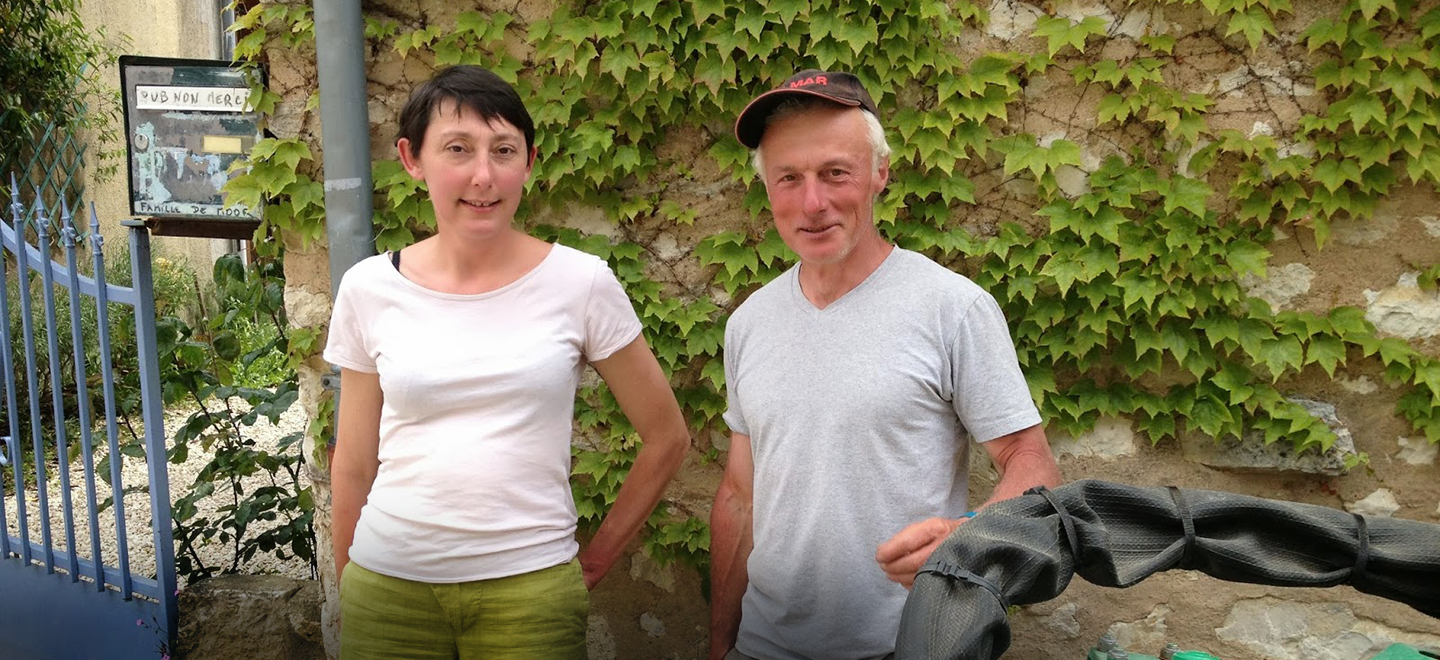 Region:
Region: -
Description:
Deep Down is a refreshing new look at Marlborough. All certified organic, these are honest wines forged with intuition and heart.
Deep Down was founded by Peter Lorimer and Clive Dougall, who was Winemaker at Seresin Estate for 12 years where he produced Marlborough’s first certified organic wine. They met at an opportune time as they were both looking to start a new project to celebrate distinct and delicious wines within an ethical and transparent business model.
The pair decided to celebrate Marlborough’s diverse landscapes and work with families on the Wrekin & Ashmore farms. “We feel blessed to be working with people who share our philosophies and farm in tune with nature,” says Clive. ‘’After 14 years of being involved in organics and biodynamics you realize that to make exceptional wine we have to give back to our vines and soils. Wines of integrity come from great land, and that takes plenty of work, plenty of compost and plenty of biodiversity.”
The team's focus is to deliver distinct yet classic wines full of personality; detail, restraint and balance are hallmarks. Clive’s extended experience with the region and hands-off winemaking ensure they protect the expression of the fruit, rather than obscuring it with additions. Deep Down’s wines are all fermented naturally by the vineyard yeasts that live on the grapes, which promotes the true character of the vineyard, while delivering increased depth, complexity and texture to the wines.
As of 2023, Deep Down is Certified B Corporation, a relatively young movement that in short, celebrates companies that are "doing the right thing." The process to get certified is long and there are a lot of criteria for receiving and keeping status. There are very few companies that go through the process, but the pair believed that becoming certified was a natural step as their main ethos has always been “to craft authentic wines that inspire and dispose of convention and chemical reliance’.
Clive is the current Chairperson of Organic Winegrowers NZ, a role which involves working alongside the NZ Government and the Certification bodies to safeguard and validate the future of New Zealand’s Organic Wine story.
The meaning of Deep Down is trusting your gut and intuition and following the path you truly believe in.
Image: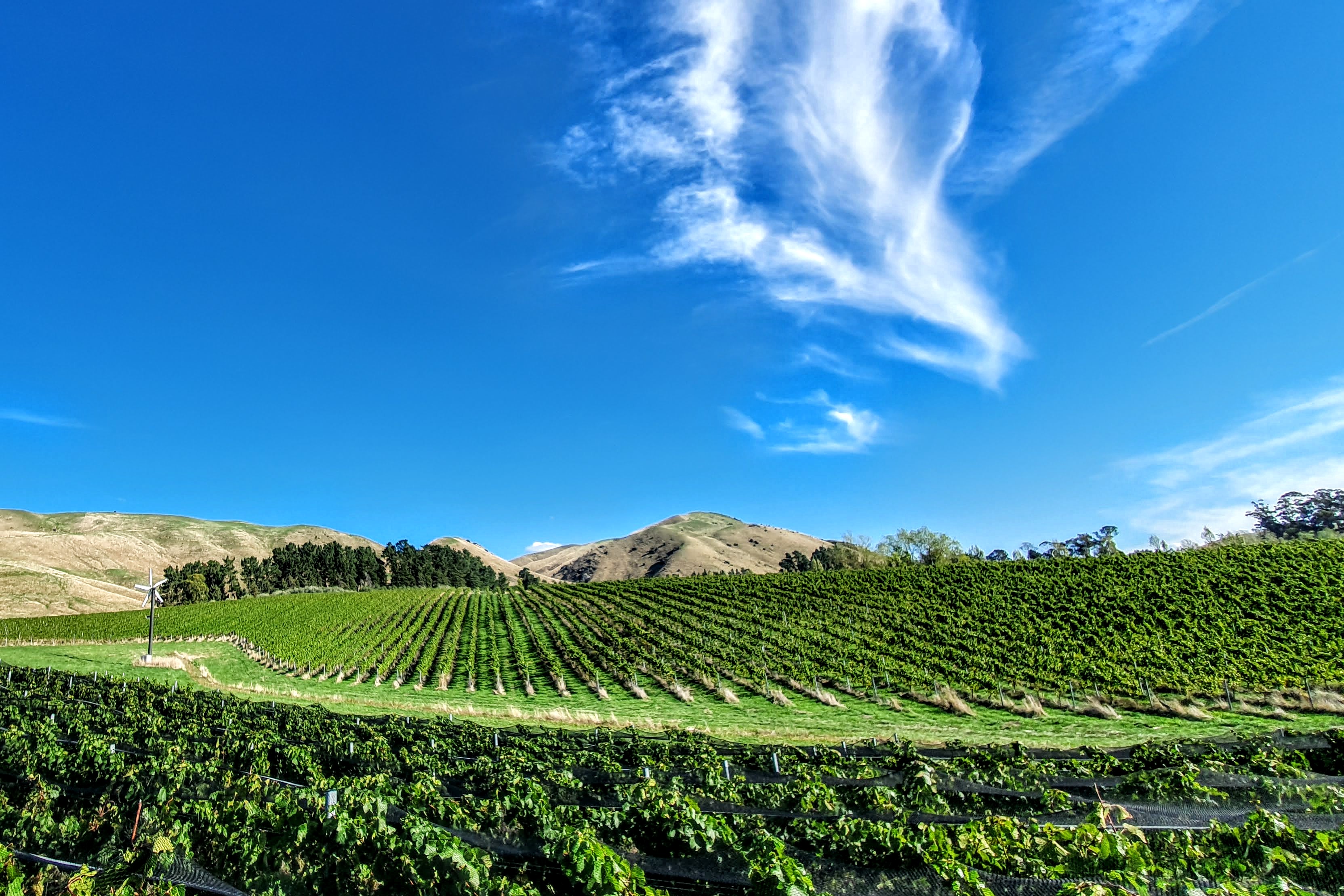 Region:
Region: -
Description:
Del Que Toma el Cardenal—was born in 2014 in response to the industrialization of mezcal. With mezcal’s rise in popularity, more and more of this spirit is being produced using less-traditional methods. Major brands are buying up the agave farms that had serviced the small producers, putting the future of independent Mexican spirits producers at risk.
A small group of these producers, in partnership with entrepreneurs from the city of Oaxaca de Juárez, founded Del Que Toma el Cardenal in an effort to preserve the ancestral legacy of their families and to safeguard the multi-generational wisdom that has fueled international interest in agave spirits. The producers who participate in Del Que Toma el Cardenal are from the municipality of Santo Domingo Albarradas, a Zapotec community located Oaxaca's Valles Centrales region, in the Tlacolula district. They follow a set of rules that is more rigorous than the criteria established to certify mezcal.
The Fundamentals of Del Que Toma el Cardenal are as follows:
- The cultivation of agaves is done by the same producers of Santo Domingo Albarradas and when more agave is required, it is paid at a value equal to or greater than the market to the agaveros of the region
- Only mature agave are used for production.
- The Piñas are cooked in wood ovens with stones from the nearby rivers in holes dug in the ground.
- The piñas are ground in a tahona pulled by a mule with a stone wheel.
- It is fermented in oak tubs and no chemicals are added to the process, the fermentation takes place naturally, so it takes from twenty to thirty days in its fermentation
- The distillation is carried out in a copper pot still, two distillations are carried out both for espadín and for the tobalá
- The distilled agave spirit cannot be cut with water, but it may be adjusted using the puntas and colas (heads and tails) from the same distillation
- As a rule we have to charge a fair price to our customers, we are below the price of other products even though our distillate is of higher quality than the vast majority of other brands
The resident expert overseeing Del Que Toma el Cardenal is Don Fortunato Santiago Pérez, a third generation maestro from a family of producers native to this region. It is families such as Don Fortunato's who have passed down and preserved traditional practices, including organic farming, communal work, and the search for purity, quality, taste, and texture in the final spirit.
Much like wine, these heirloom spirits reflect the place they were made (terroir), the agave they were made from (many are allowed), the source of water they were made with, and the 400 decisions that the producer made in the process. The agaves are grown in the basin of the Rio Grande, surrounded by high mountains where the temperate climate provides ideal conditions for long-growth, sugar-rich agaves. The abundance of mineral-rich water from the Santo Domingo, Santa Catarina, and La Calavera rivers plays a pivotal role in the flavor and aromas of the agaves.
The result? Spirits that reflect their terroir as clearly as they represent the culture from which they come. We are proud to welcome this cooperative agave-spirits project to our portfolio.
Image: Region:
Region: -
Description:
Thank you to importger Louis/Dressner for this estate profile:
(Click here for more about Georges Descombes on the LDM website)
Located in Vermont, a tiny hamlet in Villié-Morgon, Georges Descombes is the unofficial fifth member of the iconic "Gang of Four": Marcel Lapierre, Jean Foillard, Jean-Paul Thévenet and Guy Breton. In his teens, Georges worked with his vigneron father in the vines as well as a local bottling company. Hopping around from cellar to cellar gave him a chance to try a large amount of different estates, and the first time he tasted a Lapierre wine, young Georges was blown away by its purity and elegance. Then and there, he decided he would try to make wines like Marcel's.
Georges took over the estate in 1988 and immediately started shifting viticultural and oenological practices forward. Though his father had always worked traditionally in the vineyards and cellar, Georges decided to push things further by practicing organic viticulture (certified by Ecocert for many years, but now practicing without certification) and eliminating all entrants or manipulation during vinification. A minuscule dose of sulfur, less than a hundredth of what an organically certified vigneron is legally allowed to use, is added at bottling to help preserve the wines.
In total, Georges owns about 15.5 hectares of land spread over five AOC's : 7.5 hectares in Morgon, 3.5 hectares in Brouilly, 2 hectares in Regnié, 0.5 hectare in Chiroubles and 2 hectares of Beaujolais-Villages. Grapes are hand-harvested, then stored in a temperature controlled container before being placed in 60hl cement tanks. A traditional, semi-carbonic maceration occurs, and the wine ferments from its ambient yeasts. For each Cru, Georges produces old vine cuvées which are vinified separately, then aged in barrel six months before bottling.
Georges is a firm believer that his wines benefit from time in bottle, and always releases them up to a year later than most of his colleagues, particularly the old vine releases.
Image: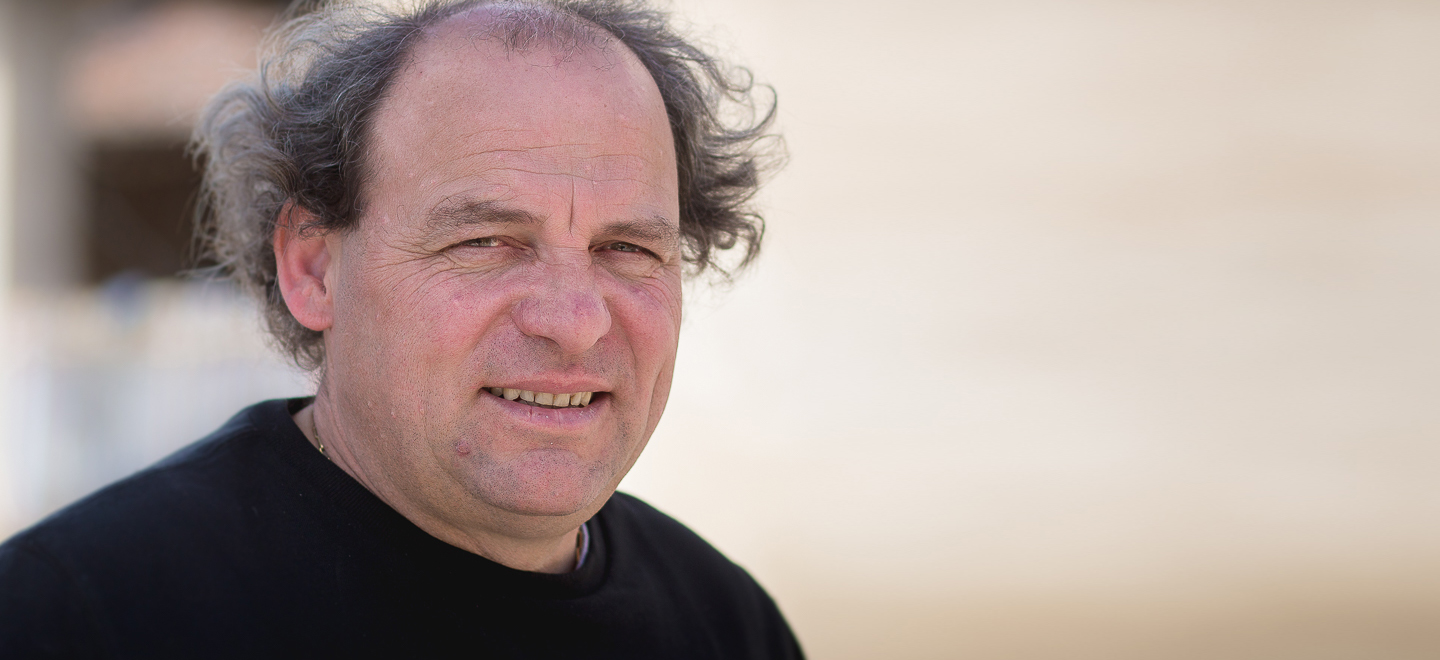 Region:
Region: -
Description:
Thank you to importer Louis/Dressner for this Desvignes profile:
(Click here for more on Desvignes on the LDM website and here for the Desvignes website)
Louis-Claude Desvignes was of the sparrow-type Beaujolais vigneron: raven-black hair that was, more often than not, standing in various directions, bright eyes and prominent nose, and a well-pitched, humorous cackle. His energy level was also twittery, barely standing still for a minute during a tasting in his cellars, offering a bottle of this and a bottle of that: various experimentations, filtrations, perhaps an older vintage of something educational. The seriousness of his winemaking, however, was never in doubt.
Louis-Claude passed away in 2021; at that point he'd been long retired, having passed the estate to his children Claude-Emmanuelle and Louis-Benoît, the eight generation to work this land. Emmanuelle joined in 2001 and Benoît in 2004; while little has changed stylistically, their their arrival has brought some major shifts. 100% of the production is now estate-bottled (Louis-Claude sold about 50% of his production to négociants), the estate is now certified organic and the two have started a small négociant largely but not exclusively focused on producing single-vineyard expressions within Morgon.
The family's historic vineyards have been within the Morgon cru for generations. Their first cuvée comes from multiple, complimentary plots blended together to produce "La Voûte Saint-Vincent" The majority of the vines are on the Côte du Py in the center of Morgon, the fruit of which is of far superior quality to that produced in the outlying areas of the appellation. If there were a classification of vineyards in Morgon, Côte du Py would be a premier cru and Javernières a grand cru. They are located on the best exposition of the hill, with soil of decomposed schist, and Javernières is a plot within the Côte du Py with a little more clay.
Throughout the 1990's and 2000's Louis-Claude began picking fruit later than the other vignerons in the area with a mind to get fruit at optimal ripeness. As the planet continues to grow hotter, his children have re-evaluated these methods without sacrificing the grapes' full potential. The wines are vinified by the traditional cru Beaujolais method with a grille to keep the cap submerged. Recently, the fermentation has been longer and more controlled than in the past in order to extract the color and material that are the most obvious virtues of this wine.
Morgon is, along with Moulin-à-Vent, the most age worthy of the Cru Beaujolais and Desvignes wines are fine examples. The wines age terrifically and take on the character of Pinot Noir, or pinotize (the term used in Beaujolais). When young, the character is of dark cherry, raspberry and blackcurrant. With age, the wines become more earthy, velvety with cocoa and coffee tones.
Image: Region:
Region: -
Description:
Belargus was birthed out of the wine estate of Jo Pithon, a legend in the Anjou, but reinvigorated by a man named Ivan Massonat who also owns part of Philippe Pacalet in Burgundy. When Ivan purchased the estate, he set about to create a crack team to produce a stable of virtual Grand Cru wines in the Anjou.
The property is built around the most spectacular parcel of vines I’ve ever seen in the Loire, the famous Les Treilles hillside, a sort of Côte Rotie of the Loire, planted entirely to Chenin Blanc. In addition to the parcels already part of the former domaine, Ivan purchased a small parcel in Savennières, 1/3 of the Grand Cru of Quart de Chaume! (which they are mostly vinifying dry), and additional parcels adjacent to the famous monopole of Les Treilles. The entire property is farmed biodynamically. The property is 100% Chenin Blanc, with the vast majority vinified dry, even when coming from the Grand Cru of Quarts de Chaume. Here is a breakdown of the domaine’s parcels and the team behind it, by Jon David Headrick:
THE TERROIRS:
Les Treilles – A monopole of almost 10 hectares on extremely steep slopes, some as steep as 70 degrees. The vines are planted on a combination of very old calcaire (much older than that found in the rest of the Loire) and schist. It produces wines of extremely long aging and finish.Bonnes Blanches – One of the most famous parcels in the Anjou owned by growers such as Pierre-Bise, Ogereau, Mosse, and others. This is historically made into sweet wine, but Belargus vinifies it dry.
Quart de Chaume Grand Cru – Belargus own 10 hectares of this Grand Cru and vinifies it mostly into one of their top dry wines. Stunning parcel, stunning wines. This is separated into three separate parcels by exposition and soil type into four wines.
Ruchères in Savennières – This is at the bottom of Roches-aux-Moines, looking out over the Loire river.
THE TEAM:
Adrien Moreau – Winemaker. Formerly at Cheval Blanc, Haut-Brion, Roederer.Jo Pithon – Jo, the former owner of the estate, is now part of the team and is the resident historian of the various parcels farmed by Belargus. Jo singlehandedly converted the monopole of Les Treilles from scrub bush to terraced vineyards. It is the most stunning piece of land I’ve ever seen in the Loire outside of the possible exception of La Coulée de Serrant.
The estate is composed of 24 hectares farmed at extremely low yields (an average of 25 hl/ha instead of the normal 60 hl/ha.). The meticulous and perfect farming is equaled in the cellar, where winemaking is slow and unobtrusive. Fermentations are spontaneous and made in French wood, lasting from a week to many months, depending on the plot.
Image: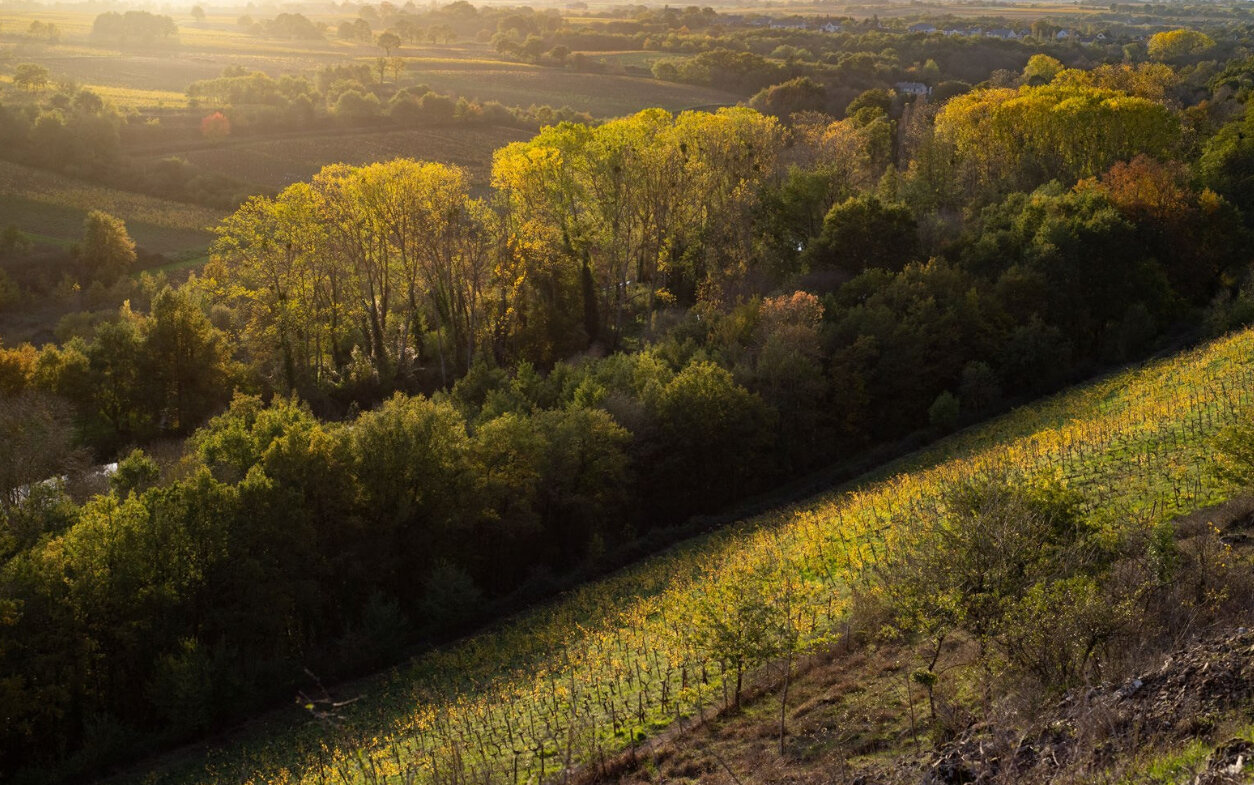 Region:
Region: -
Description:
While co-ops still play a vital role in producing and selling wine across France, they are generally not known for innovation, let alone garnering attention as the quality leader in an appellation. While most cooperatives operate by paying growers by volume, relatively few pay for quality. Almost none are largely organically farmed, segregate their fermentations by parcel and soil type, rely solely on indigenous yeasts, and resolutely avoid enzymes, winemaking tricks, and excessive SO2. If you were aware of such a cooperative, wouldn’t you be intrigued?
These practices were not initially what drew Eric Solomon to visit Les Vignerons d’Estezargues in the mid-1990s but rumors of some soulful Syrah that was being bulked out to larger negociants. So curious to see for himself, Eric visited Estezargues and tasted what would become Domaine d’Andezon Syrah, one of the most dependable and affordable Côtes-du-Rhônes in our portfolio.
Les Vignerons d’Estézagues was only founded a few years before Eric’s fateful visit. Ten local families with small estates banded together to form an association to pool their resources and vinify their own wines. Rather than make generic bulk wine, from the start, they vinified their sites separately. Soon they discovered their best plots and cuvées from their varied terroirs and varieties. As chance would have it, Domaine d’Andezon is a member/estate of the cooperative, and they grow some rather remarkable Syrah. Since that time, we’ve added La Granacha, a cuvée of Grenache grown on a soil covered by nearly a meter of galets – a dead ringer for a mini-Châteauneuf-du-Pape.
This profile, including all tasting notes and photos, was edited from the European Cellars website. For more information please visit: European Cellars.
Image: Region:
Region: -
Description:
Domaine de Cornillac is a fourth generation family-owned winery with 9.5 hectares in the town of Saint Vérand in the south of Beaujolais. The soil is a complex mix of clay, schist, sand, and plagiogranite. The vines are on hillsides at 400 meters altitude which brings freshness to the wine. This qualitative terroir gives wines with ample body and length. Schist has pockets of clay, layered with other minerals compressed into thin layers. The clay gives the wines depth and creates a reservoir of water, helping out the vines in dry periods. The plagiogranite layers give minerality, tension, and length to the wine. The plagiogranite is very similar to the blue granite found in the Côte de Brouilly. The decomposed granite gives dry extract to the wines, which translates to how the wine hangs on the palate.
The grapes are hand-harvested. Whole clusters are kept depending on the maturity of the stems. Temperature controlled tanks are used to manage the speed of the alcoholic fermentation. Pump-overs happen daily to break the cap and punch downs are used depending on the vintage.
Domaine de Cornillac is certified sustainable by HVE (Haute Valeur Environnementale), which takes into consideration the ecological infrastructure not only of the vineyards, but everything touching the vineyards – forests, hedges, etc. Cover crops are used to restore land where the vines have been removed. The core ethos is that natural habitats of flora and fauna are respected.Image: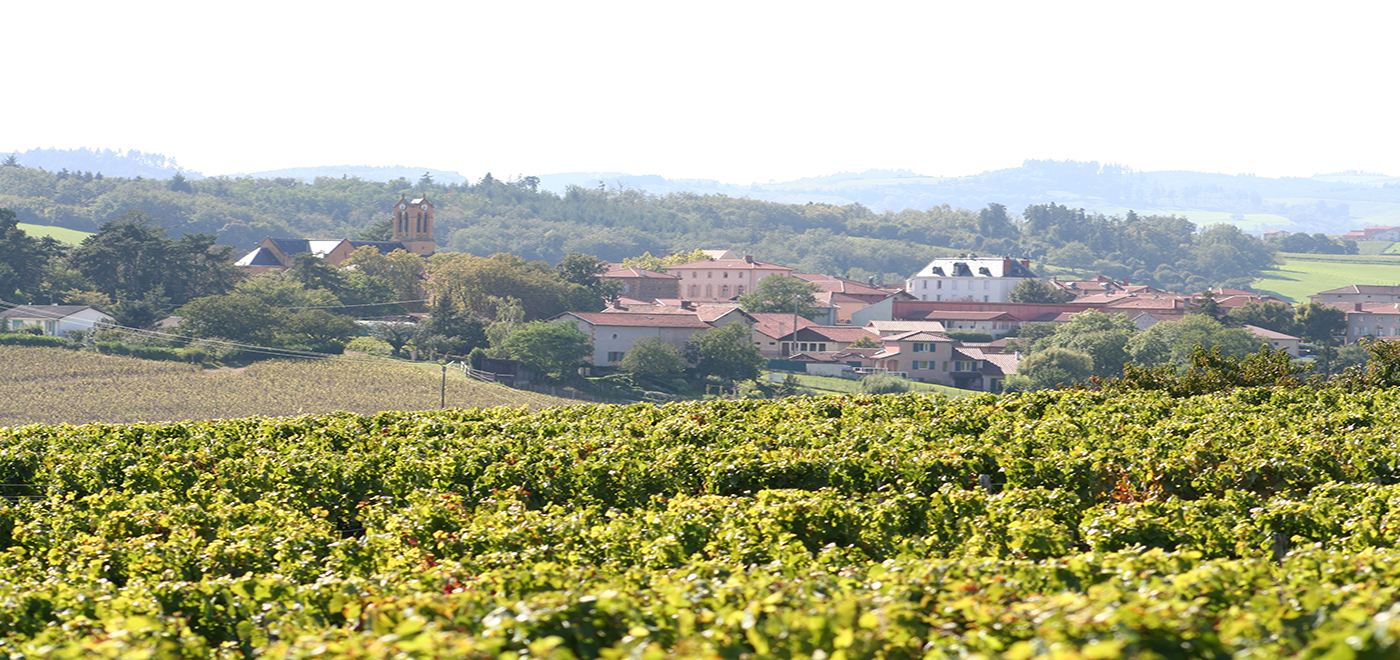 Region:
Region:
